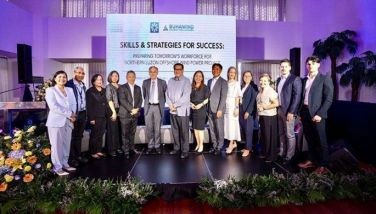JICA pushes new transport plan
MANILA, Philippines - The Japan International Cooperation Agency (JICA) is proposing a transport plan for Metro Manila that could decongest the metropolis and save P2.4 billion lost due to traffic jams each day, an official said yesterday.
The Transport Infrastructure Development Roadmap for Mega Manila, expected to be finished this month, cites the urgent need to decongest traffic in Metro Manila and spread economic activities to potential growth centers in Regions 3 and 4-A, particularly Cavite, Subic, Clark, Tarlac, Batangas, and Lucena in Quezon province, JICA Philippines chief representative Takahiro Sasaki said.
“We want to help the Philippine government attract more investments and create jobs in other areas in the country. Hopefully, this roadmap would be able to assist the Philippines in setting policies and strategies in tackling transportation challenges, particularly in Metro Manila,†he said.
Sasaki added that once implemented, the plan can help spur long-term investments in areas such as manufacturing, agro-based industries, services, and tourism as well as accelerate industrial development in the Clark, Pampanga; Subic, Zambales; and Lipa, Batangas.
According to the Philippine Economic Zone Authority, about 3,000 companies employing 800,000 workers are mostly located in the economic zones of Calabarzon and Central Luzon.
JICA’s proposed roadmap, part of a technical assistance project for the National Economic Development Authority, outlines short-term and long-term components.
Sasaki said the roadmap cites the need to boost infrastructure development such as new gateway airports and seaports, improved road networks and expressways, an integrated urban mass-transit network in Metro Manila, road-based public transport modernization, and “soft†components such as the upgrading of the metropolis’ traffic management system.
The demand for mass transit in Metro Manila will likely reach 7.4 million passengers a day by 2030, according to Sasaki. Currently, 71 percent of commuters in Metro Manila rely on buses and jeepneys.
The roadmap identifies the rising population in Metro Manila, increased risks to families living along waterways, a housing backlog, and traffic congestion as among the challenges that need to be tackled to ensure that economic benefits spill over to other areas.
The proposed roadmap also cites cases of successful cities like Tokyo, Yokohama, New York, Hong Kong, and Singapore since between 20 percent and 62 percent of commuters in these cities use railways.
- Latest
- Trending

















